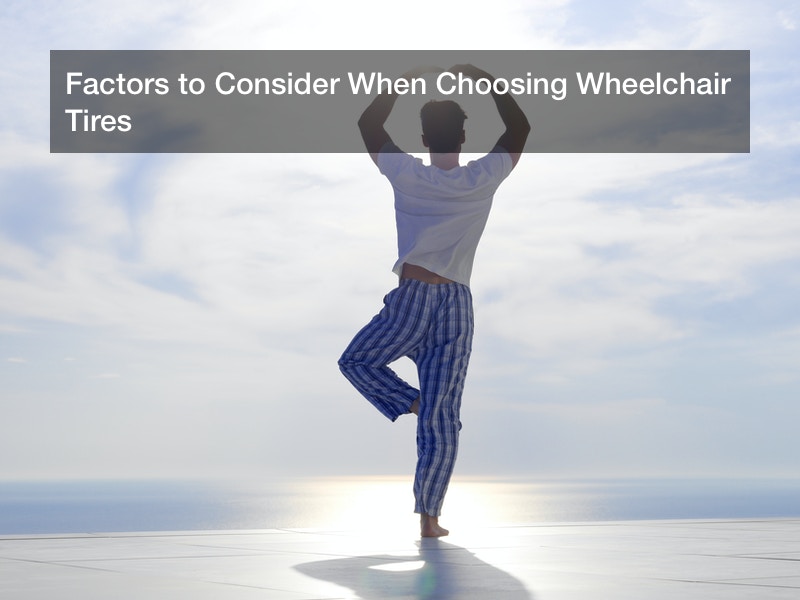
What wheelchair tread is ideal for snowing or rainy times? What kind of tires are ideal for your wheelchair: foam-filled, rubber, or pneumatic? Wheelchair tires are crucial accessories that improve the mobility of your wheelchairs. Your wheelchair can’t work without a perfect pair of tires.
At least 650 million people or approximately 10% of the global population lives with some physical disability and they need a wheelchair. But what makes up a good high performance wheelchair and wheelchair tires?
This blog post provides you with a cheat sheet that can help you make informed decisions when buying tires for wheelchairs.
Tire Tread
There are many types of wheelchair tire treads and it’s often challenging to choose and determine the kind of tread pattern that is ideal for your wheelchair. Here are the three common types of tire tread features and their pros.
Knob spacing: Tires with tight-packed knobs roll fast in dry conditions. But they often get packed with mud more than the rest. Widely-spaced knobs or treads are ideal for wet conditions because they provide a better grip, and they’re better at shedding dirt.
Tread knobs: Tread knobs improve the wheelchair tires’ ability to grab roots or rocks and dig into wet surfaces. Tall and big treads make your tires more aggressive by improving their grip power. But the toothy tires run slow on hard-packed surfaces because the knobs reduce the rolling speed. Small-knobbed tires move fast on hard-packed roads and they’re ideal for driveways and roads.
Tread direction: Directional patterns influence the grip and roll direction of tires. V-shaped treads often increase the forward speed of wheelchair tires. But when reversed, they can help to boost the tires’ grip.
Tire Pressure
The level of pressure in wheelchair tires influence the speed, softness, and maneuverability of your wheelchair tires. Tire pressure that isn’t too soft or hard provides a smooth ride. Tires with high pressure provide a bumpy ride, and tires with low pressure experience great resistance. As such, it’s advisable to get tires with medium pressure levels. Tire pressure also affects the amount of energy used to drive powered wheelchairs.
Tire width
Wide tires often provide the best traction and they’re preferable in remote areas with rough terrain, where high traction is necessary. The narrow tires are ideal for hard-packed surfaces in cities or towns because they provide better speed and maneuverability.
Types of Wheelchair Tires
Foam-filled tires: In foam-filled tires the space occupied by air in conventional tires gets filled with soft polyurethane, which creates a resilient and soft rubber core. Foam tires don’t need lots of maintenance like pneumatic or urethane tires. These tires can carry at least 4000lbs and they’re ideal for scooters and power chairs.
Urethane Wheelchair Wheels: Urethane tires are solid tires made only by urethane. These puncture proof tires need little to no maintenance. They’re heavier than other types of tires because they’re made of solid urethane. The tires are durable, but hard to install because they have to be stretched to the wheelchair’s rim. These types of tires are ideal for indoor use only, and they’re not ideal for sporting events because they provide a bumpy ride.
Pneumatic or Air Tires: Pneumatic tires are akin to most air-filled vehicle tires. The tires have tubes that get filled with air between the wheel and the tire. These tires need more maintenance than urethane or foam-filled tires, and they get punctured more often. The tires provide a ride that is less bumpy than urethane or foam-filled tires because they experience low or minimal compression when the tires move over a surface that is uneven. These tires are ideal for an active lifestyle, and they can be used in sports because they’re light and shock-absorbing.
Ideal wheelchair tires cushion you from rough and bumpy rides, and they also determine your level of maneuverability and traction. All these vital wheelchair movement elements get determined by the type of tires that you choose for your wheelchair. When making such a choice consider the factors highlighted above and you’ll be capable of getting an ideal tire choice for a smooth wheelchair ride.
